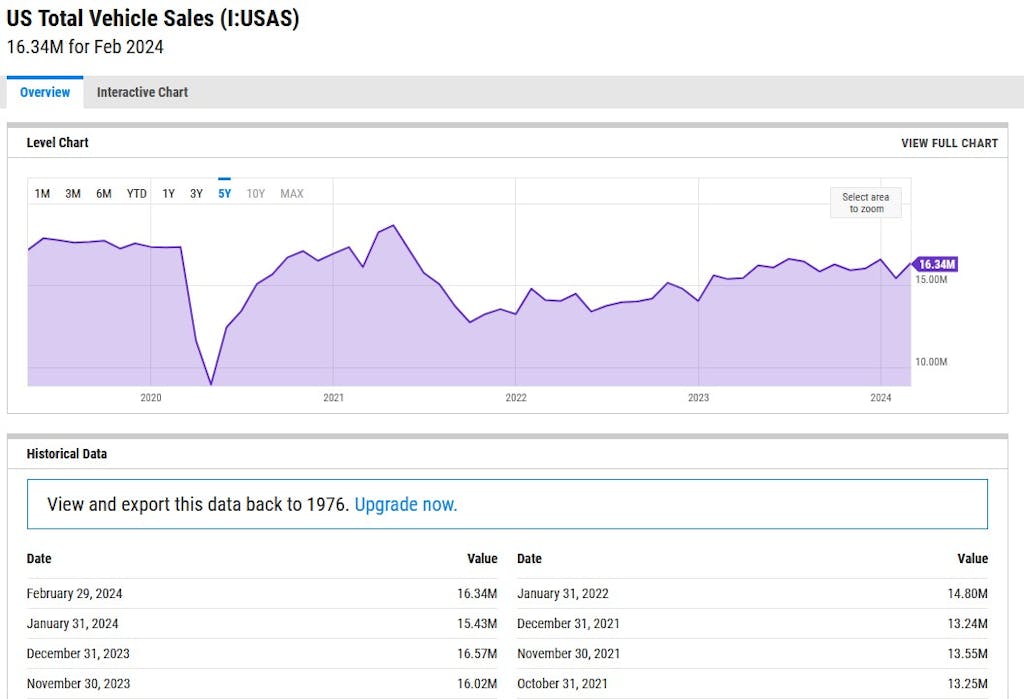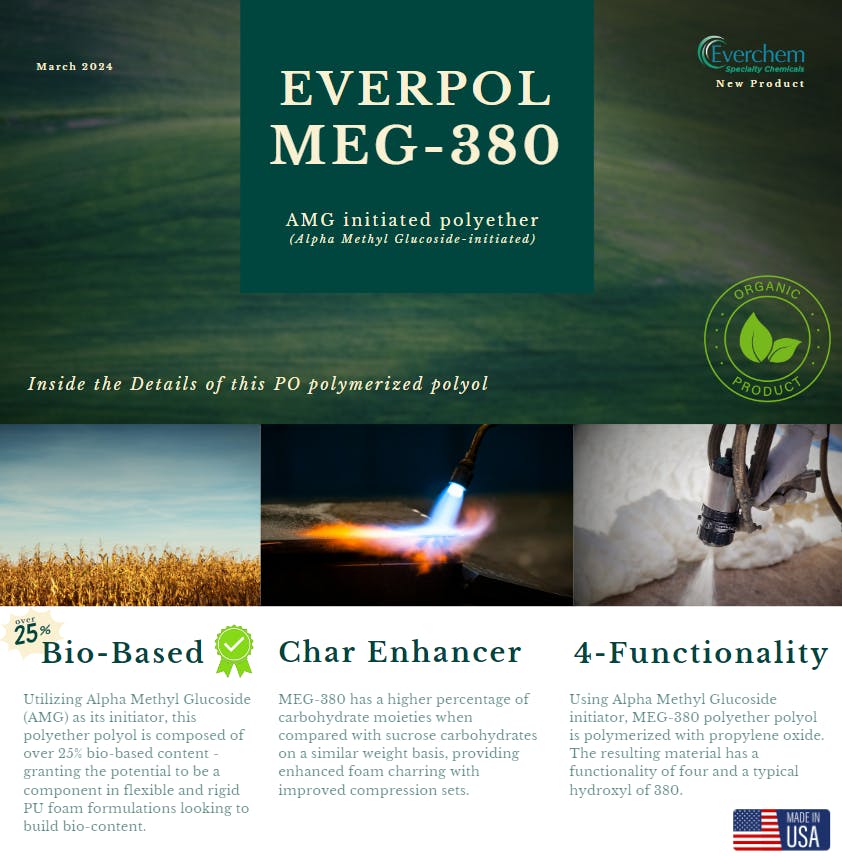The Urethane Blog
Everchem Updates
VOLUME XXI
September 14, 2023
Everchem’s exclusive Closers Only Club is reserved for only the highest caliber brass-baller salesmen in the chemical industry. Watch the hype video and be introduced to the top of the league: — read more
April 2, 2024
China’s Accelerated Construction of LNG Carriers and Receiving Terminals Drives Demand for Rigid Foam
PUdaily | Updated: March 29, 2024
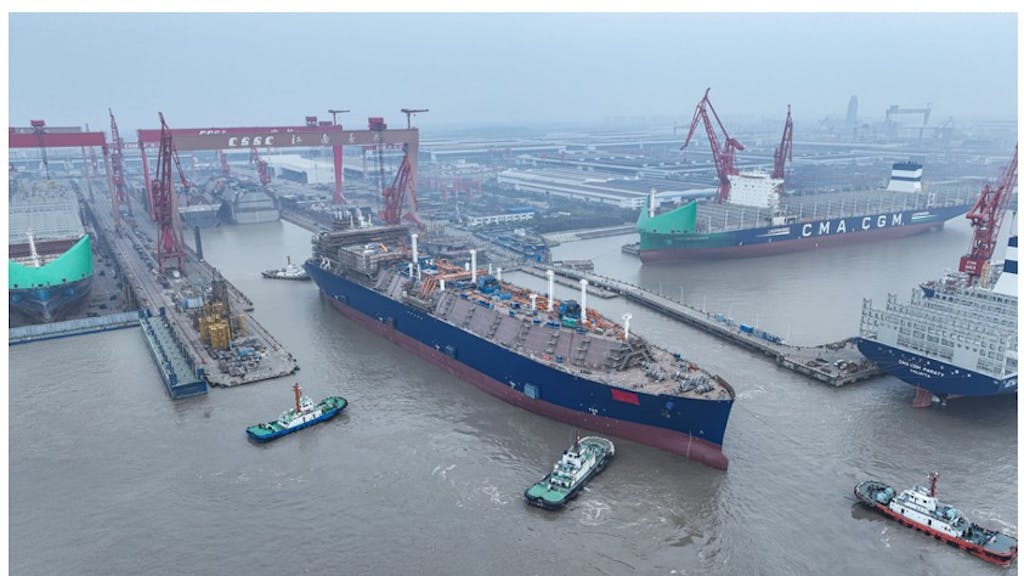
4 Carriers Built Simultaneously in the Same Dock in Shanghai, Accelerating Construction of Large LNG Carriers
On March 24, inside the No. 2 dock of the Changxing shipbuilding base at China State Shipbuilding Corp’s Hudong-Zhonghua Shipbuilding (Group) Co., Ltd, four LNG carriers under construction were densely arranged. Two of these carriers were launched on the same day, while the other two were half-floated. Huadong-Zhonghua Shipbuilding is for the first time building four 174,000-cbm liquefied natural gas (LNG) carriers simultaneously in the same dock. This milestone signifies a new record in LNG carrier construction for the company, set to become a regular practice in the future. 2024 is a crucial year for the shipbuilder’s plans to double LNG carrier production capacity. Hudong-Zhonghua currently has more than 50 LNG carriers on order, including more than 30 fifth-generation vessels, with delivery dates stretching until 2028, positioning it as a pioneer in global LNG carrier sector.
Continued Surge in Global Demand for LNG
Global trade in LNG reached 404 million tonnes in 2023, up from 397 million tonnes in 2022, showing a 1.76% year-on-year increase, with tight supplies of LNG constraining growth, according to Shell LNG Outlook 2024. Natural gas demand has already peaked in some regions like Europe, Japan and Australia, but globally is set to continue growing. Shell predicts that global demand for LNG will rise by more than 50% by the year of 2040, reaching around 625-685 million tonnes per year. Looking at the phased growth, China is poised to dominate LNG demand growth this decade as its industry seeks to cut carbon emissions by switching from coal to gas. Over the following decade, declining domestic gas production in parts of South Asia and South-east Asia could drive a surge in demand for LNG as these economies increasingly need fuel for gas-fired power plants or industry. However, countries in South Asia and South-east Asia would need significant investments in gas import infrastructure.
China’s LNG Outputs and Imports Both Grew, with Robust Expansion of LNG Receiving Capacity
As the transition from coal to gas in its industry accelerates and the push for net zero emissions continues, the share of natural gas in China’s energy mix is steadily rising, making China a key driving force for global natural gas industry growth. China’s natural gas output reached 230 billion cubic meters in 2023, maintaining an annual increase of 10 Bcm for seven consecutive years, according to National Energy Administration. In the same year, China’s LNG imports totaled 71.32 million tonnes, a 12.6% year-on-year increase (source: General Administration of Customs of China), surpassing Japan once again to become the world’s largest LNG importer.
On the other hand, China achieved a historical high in newly added LNG receiving capacities. There were six LNG terminals projects, including new and expansion projects, which started operations in 2023, adding a capacity of 18.8mtpa, bringing China’s total LNG receiving capacity to 116mtpa at the end of 2023, with 28 LNG receiving terminals were operational. China is expected to add ten LNG receiving terminals in 2024, most of which are scheduled to commence operations by year-end, raising China’s LNG receiving capacity to 170.29mtpa, an increase of 40.75mtpa from 2023.
Polyurethane Application in LNG
The growth in demand for LNG carriers, onshore LNG storage facilities (such as LNG-FSRUs – Floating Storage and Regasification Units, LNG-FPSOs – Floating Production Storage and Offloading Units), and a series of transportation and storage facilities has boosted the demand for PU insulation materials, especially reinforced PU insulated panels. For example, in the construction of LNG carriers, as shipowners increasingly focus on reducing evaporation to decrease LNG losses, LNG containment systems are transitioning from traditional GTT-NO96 membrane technology to new structures such as NO96-L-03+, MARK-III, and MARK-III Flex. Insulation materials are also transitioning from insulation boxes filled with expanded perlite to fiberglass-reinforced PU panels. Moreover, PU insulation materials are also used in LNG pipelines and storage facilities. The consumption of PU rigid foam in Chinese LNG sector saw a growth of over 30% in 2023, according to PUdaily.
April 1, 2024
Chemical Grade propylene settles up 3c/lb to $0.565/lb . . .

March 26, 2024
Durable Goods Orders Rebound In Feb From January Collapse, Defense Spending Slides
by Tyler Durden
Tuesday, Mar 26, 2024 – 08:38 AM
After crashing in January (driven by the collapse in Boeing orders), durable goods orders (preliminary) for February rose 1.4% MoM (better than the +1.0% MoM exp), and notably swinging from a downwardly revised 6.9% MoM plunge in January (from -6.2%)…

Source: Bloomberg
That dragged the headline orders up 4.6% YoY. Ex-Transports also beat, rising 0.5% MoM (vs +0.4% exp) and up 1.3% YoY.
Non-defense aircraft orders jumped 24.6% MoM as it seems people are ordering Boeings again? Defense spending tumbled 12.7% MoM…
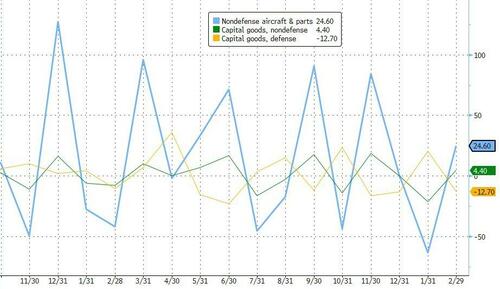
Source: Bloomberg
Computer & related products saw another big MoM rise as perhaps this is the AI cycle showing up in the data…
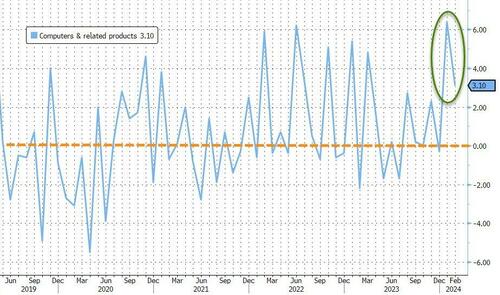
Source: Bloomberg
On the bright side, core capital goods shipments, a figure that is used to help calculate equipment investment in the government’s gross domestic product report, continued its strong bounce back from YoY contraction in December. However, on a seasonally-adjusted basis, core capital goods shipments fell 0.4% MoM
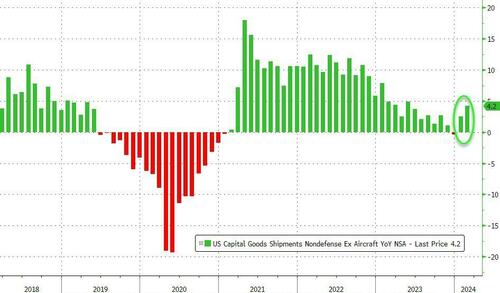
Source: Bloomberg
The YoY rebound is not exactly a signal that portends rate cuts!
EVERPOL MEG-380 is an Alpha Methyl Glucoside-initiated polyether polyol polymerized with propylene oxide. The resulting material has a functionality of four and a typical hydroxl of 380. Due to the higher percentage of carbohydrate moieties when compared with sucrose carbohydrates on a similar weight basis, MEG-380 provides enhanced foam charring with improved compression sets. Main applications include low to high density rigid pour-in-place systems, however, EVERPOL MEG-380 may also be included as a component in flexible polyurethane foam formulations to build bio-content.
OVER 25% BIO-BASED | CHAR ENHANCER | 4-FUNCTIONALITY
Everchem has developed a new polyether polyol in conjunction with one of our long-term production partners that will provide unique advantages to your polyurethane formulation challenges.
EVERPOL MEG-380 Benefits:
- – Over 25% Bio Content as Alpha Methyl Glucoside (AMG) carbohydrate to meet the Certi-PUR Bio-Certification program.
- – AMG does not decompose like sugar carbohydrates during the polyol manufacturing process.
- – Improved compression sets with 4-functional structure.
- – Lower viscosity when compared with sugar polyols at similar carbohydrate loading.
- – Char enhancer with a higher percentage of carbohydrate moieties compared with sucrose carbohydrates on a similar weight basis.
EVERPOL MEG-380 Market Applications:
- – Low Density Rigid Systems with high water content – SPF, FIP packaging
- – High Density Rigid Systems with low level Aux Blowing Agents.
- – High Density Flexible Foam grades AND High Density Visco-Foam grades with high Bio-Content demands.
| TYPICAL PROPERTIES | VALUE |
| Hydroxyl Value | 380 mg KOH/g |
| Water Content | < 0.05 % |
| pH | 6.0 |
| Acid Value | < 5.0 mg KOH/g |
| Viscosity (cP) | ~ 6000 cps @ 25 C |
PROBLEM SOLVER MATERIAL
Get a quote or a sample of our new specialty additive MEG-380

